Chinese Healing Exercises (30 page)
Read Chinese Healing Exercises Online
Authors: Steven Cardoza
Tags: #Taiji, #Qi Gong, #Daoist yoga, #Chinese Healing, #Health, #medicine, #remedy, #energy

Once you are feeling something between your hands, whatever that may be, then you can begin playing with those sensations. Move your hands farther apart, as though the ball is growing larger. Only move your hands as far apart as you can while maintaining that sense of qi between them. If you lose that sense, bring your hands closer together until you regain it. Then move your hands as though you are rolling them over the surface of the large ball, so that your right hand may be on top of the ball with your left on the bottom, and then slowly reverse those positions. You can move your hands any way you can think of, as long as you keep the laogong points facing each other and you maintain the sense of qi between them. Practice this as long as you'd like. When you are ready to finish, either bring your palms closer together slowly, until they physically touch, and then complete the Running the Meridians practice that follows, or place your hands on your Dantian to store qi there, as is described in Qi Storage at the Dantian, after the next exercise.
3. Ending a Practice Session: Running the Meridians
This is another practice that influences almost your entire body at once. It can be practiced alone at any time of day for a quick pick-me-up, or it can be practiced at the end of any series of self-care exercises you choose on any given day. Almost all of the self-care exercises open a small or a large part your body, freeing energy that may be stagnant or restricted in those parts. This exercise organizes the energy that has been freed, and directs it through your acupuncture meridians adding to the normal flow of healthy qi, in the proper direction, to increase energy and benefit overall health.
This exercise makes use of the Chinese anatomical position: when standing, raise your hands over your head, palms facing forward in what looks like a gesture of giving up or surrender. Within the acupuncture meridians, Yang qi runs down the back of your body from your head to your feet, including the backs of your hands and arms, and Yin qi runs up the front of your body from your feet to your head. With your body aligned in anatomical position, all the Yang meridians are facing the back of your body, and all the Yin meridians are facing the front of your body. Keep this image in mind when you perform this exercise, since your body will be in motion and you may not readily see that you are encouraging qi to flow in these healthy directions.
You'll work the upper half of your body, primarily your arms, separately from the lower half of your body, primarily your legs. It's most typical to begin this practice with your arms, as I'll describe here. This is most advantageous when running the meridians at the end of a taiji, qigong, or other self-care practice. When you finish with the legs, your hands naturally wind up at your lower Dantian, the perfect location to facilitate simple qi storage at the end of any set of self-care practice. If you run the meridians as a stand-alone practice at any time, and do not do qi storage afterward, it's fine to start with your legs and end with your arms if you prefer.
Method
Stand with your feet parallel, shoulder or hip width apart. Make sure your knees are not locked, and slightly bent. As with all exercises where you will use your hands to help direct qi anywhere in your body, it's a good idea to rub your palms together until they are warm. This brings both blood and qi to your hands. If you have previous qigong experience and you know beyond a shadow of a doubt that you can bring your qi to your hands at will, you can skip that step. Extend your left arm straight in front of you, at approximately shoulder height, palm facing upward. Place your right hand, palm down, upon your left shoulder where your neck and shoulder meet
(
Fig 11.2A
on next page
).
Rub or wipe your right hand down the entire length of your left arm, to just beyond your left fingertips. Then turn your left hand palm down, and rub or wipe your right hand up the back of the entire length of your left arm
(
Fig 11.2B
on next page
),
from backs of the fingertips to where your neck and shoulder meet. At this point, remove your right hand, and extend your right arm directly in front of you at approximately shoulder height, palm facing upward. Do your best to make the movement of your right arm smooth and flowing, with a sense of purpose and connection rather than randomly moving it into position.
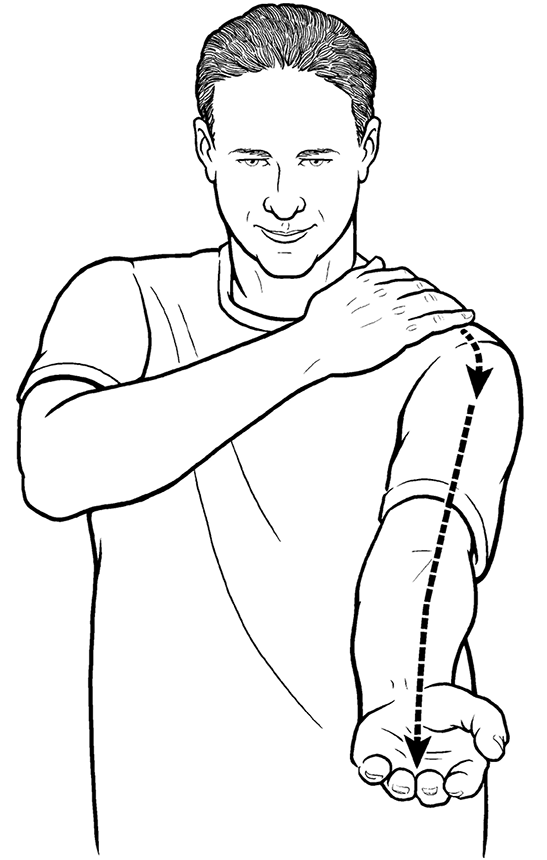
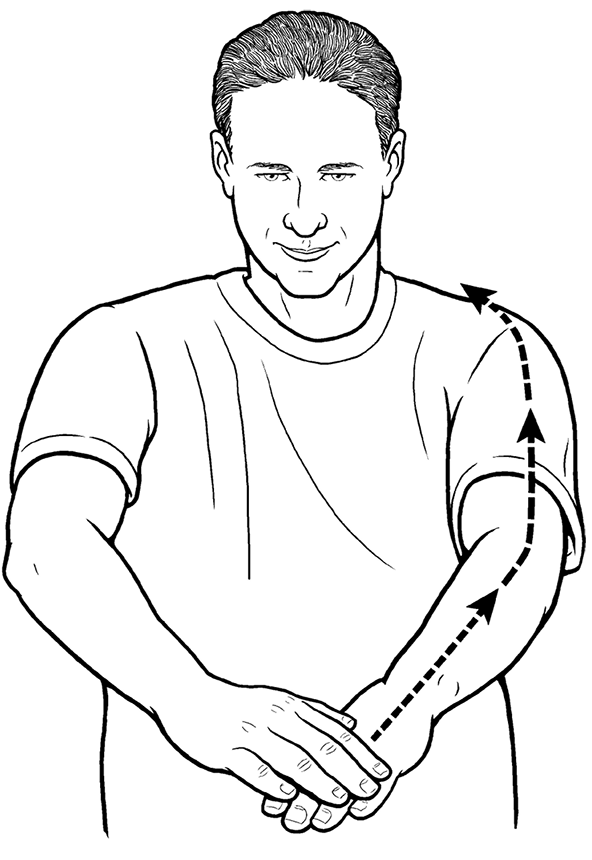
Figures 11.2A and 11.2B (Ending a Practice Session: Running the Meridians)
Now place your left hand, palm down, upon your right shoulder where your neck and shoulder meet. Rub your left hand down the entire length of your right arm, to just beyond your right fingertips. Then turn your right hand palm down, and rub your left hand up the back of the entire length of your right arm, from backs of the fingertips to where your neck and shoulder meet. At this point, remove your left hand, and extend your left arm directly in front of you at approximately shoulder height as before, palm facing upward. Do your best to make the movement of your left arm smooth and flowing, with a sense of purpose and connection rather than randomly moving it into position. Repeat this procedure twelve times.
Even though your arms are extended in front of you and in motion, remember that in Chinese anatomical position, your are wiping your arms in the same direction as qi naturally flows within the meridians; that is, up the front or inner Yin surface of your arms, and down the back or outer Yang surface of your arms. As you get more familiar with this practice, you can perform it at either a slower or a faster pace. The smoothness of your movements and the regularity of the rhythm you establish is more important than the speed itself.
 Figure 11.3A (Ending a Practice Session: Running the Meridians)
Figure 11.3A (Ending a Practice Session: Running the Meridians)
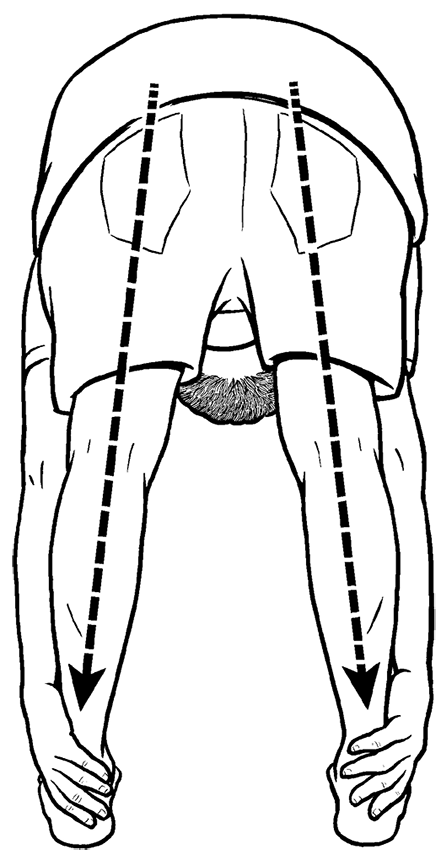

Figure 11.3B (Ending a Practice Session: Running the Meridians)
Place the palms of both of your hands on the small of your back, just above your buttocks, so that the tips of your middle fingers are nearly touching
(
Fig 11.3A
on previous page
).
Bending forward, keep both hands in contact with your body and wipe down your buttocks and the backs of each leg, right hand wiping down the right leg and left hand wiping down the left leg. Wipe behind each knee, and all the way down to your heels. Make sure to spread your thumbs from the rest of your hands, and use them to wipe down the outer, lateral surface of your thighs and lower legs
(
Fig 11.3B
).
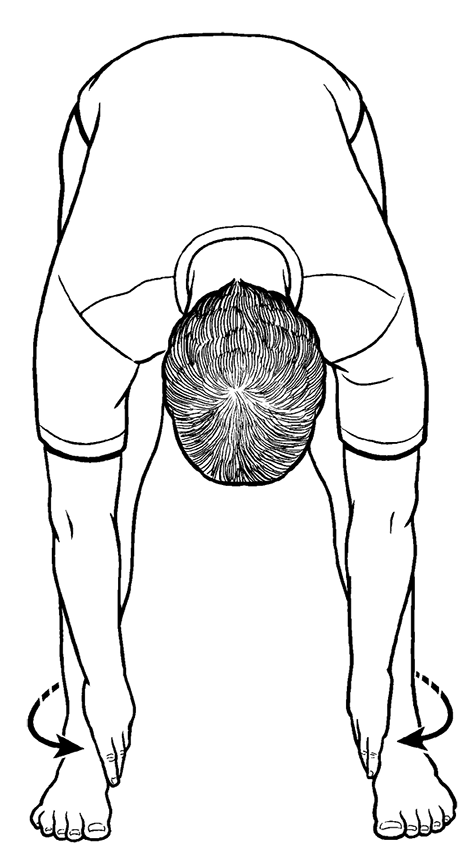
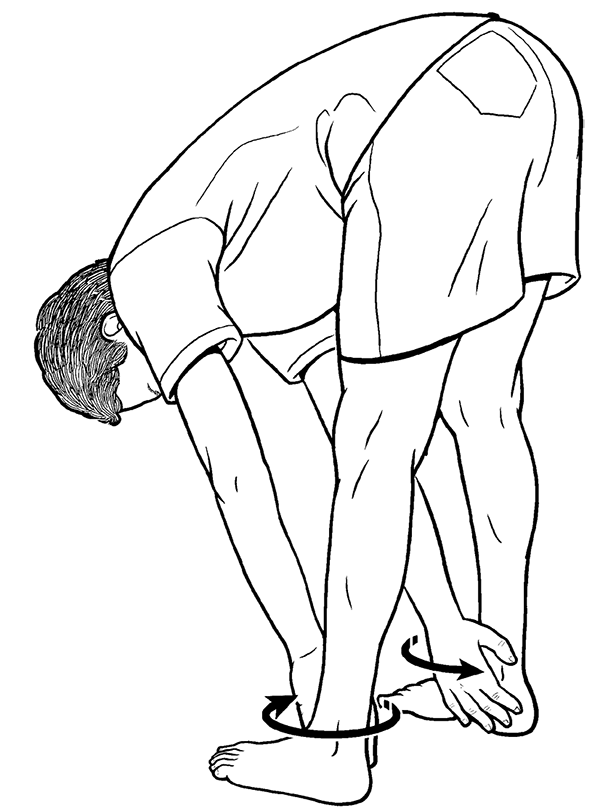
Figure 11.3C (Ending a Practice Session: Running the Meridians)
Keeping your hands in contact with your body, wipe around the outer ankles, over the tops of the front of the feet, and then to the inner ankles
(
Fig 11.3C
).
Rising up, wipe the inner surface of your lower legs and thighs. As your hands near your torso, spread them slightly so they move just outside of your genitals, and bring them to your low belly just above your pubic bone and below your navel
(
Fig 11.3D
on next page
).
Still maintaining contact with your body, spread your hands away from each other, wiping around your waist until they arrive at their starting position at the small of your back, middle fingers nearly touching. Repeat this procedure twelve times.